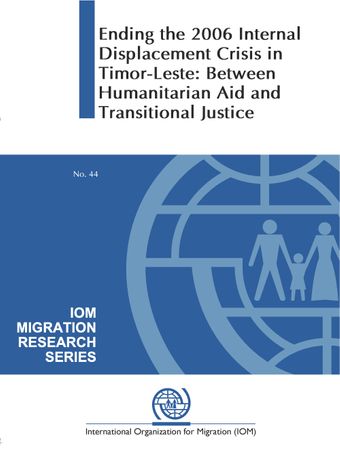Achieving return and resettlement through the cash grant scheme: Selected implementation challenges

- Author: Peter Van der Auweraert
- Main Title: Ending the 2006 Internal Displacement Crisis in Timor-Leste , pp 29-36
- Publication Date: December 2012
- DOI: https://doi.org/10.18356/4c5a1579-en
- Language: English
At the outset, signs for a successful return of IDPs were not ominous. There was the issue of many IDPs being forced to flee their homes following violent threats and intimidation from their own neighbours. Given the limited prosecution that had taken place in relation to the 2006 crisis, these same neighbours still lived in the neighbourhoods and communities to which IDPs would need to return. Moreover, many of the IDPs in camps were “easterners” who had been pushed out of their neighbourhoods by “westerners” (although the reverse is also true); hence, it was feared that violence against returning families could potentially trigger a wider conflagration that would tear the country apart. Additionally, a significant number of houses and parcels of land left behind by IDPs had been occupied by others in the meantime, not infrequently by the very people who had had a hand in pushing them out. This represented a further potential source of conflict and violence. Finally, the IDPs themselves were fearful of going back and uncertain as to how their former neighbours would receive them. Policymakers agreed that simply providing IDPs with a cash grant and expecting them to return home without any further support or intervention would not only be bad, it is quite likely also a dangerous policy in the Timor-Leste context.
© United Nations
ISBN (PDF):
9789210559188
Book DOI:
https://doi.org/10.18356/2891f2fb-en
Related Subject(s):
Migration
Sustainable Development Goals:
Countries:
Timor-Leste
-
From This Site
/content/books/9789210559188c007dcterms_title,dcterms_subject,pub_keyword-contentType:Journal -contentType:Contributor -contentType:Concept -contentType:Institution105
/content/books/9789210559188c007
dcterms_title,dcterms_subject,pub_keyword
-contentType:Journal -contentType:Contributor -contentType:Concept -contentType:Institution
10
5

